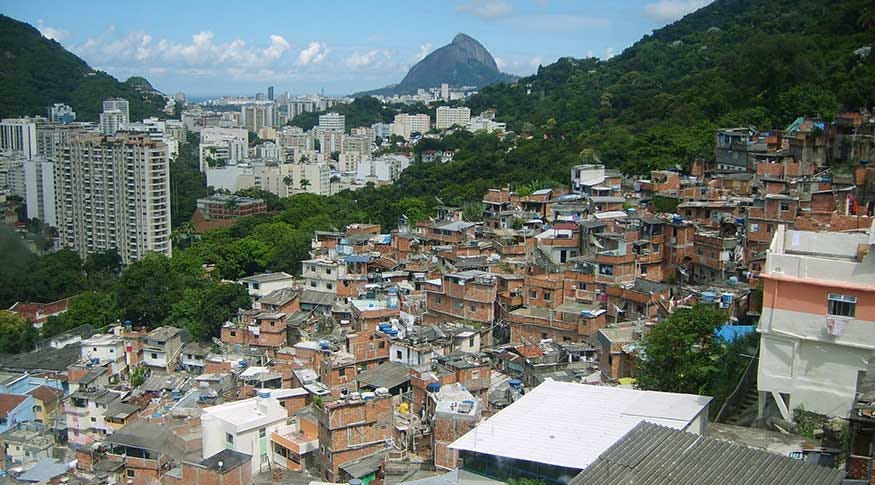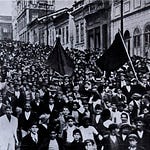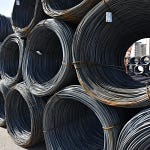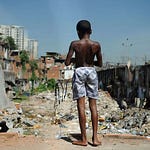
The discussion is focused on reports from various Brazilian news sources regarding the 2022 Census data focusing on "favelas," a term now officially adopted by the Brazilian Institute of Geography and Statistics (IBGE) to replace the previous "subnormal agglomerates." The data reveals a complex and evolving picture of these communities, highlighting their growth, challenges, and demographic characteristics.
Significant Growth: The number of favelas in Brazil has nearly doubled since 2010, rising from 6,329 to 12,348, spread across 656 municipalities. The population residing in these areas has also increased, reaching 16.4 million, representing 8.1% of the national population. "De acordo com o Censo, há doze anos, havia 6.329 favelas distribuídas por 323 municípios no Brasil. Desde então, em meio à expansão desenfreada das áreas urbanas rumo às periferias, o número disparou para 12.348 comunidades em 656 cidades," reports Veja. While part of this increase can be attributed to improved data collection methods, it also reflects the ongoing expansion of urban areas and the challenges of housing affordability.
Concentration and Distribution: Favelas are concentrated in the Southeast region, which accounts for 48.7% of the total, followed by the Northeast (26.8%) and North (11.6%). São Paulo leads with the highest number of favelas (3,123), followed by Rio de Janeiro (1,724) and Pernambuco (849). As Diario do Nordeste states, "a maioria (6.060) está no Sudeste, seguido pelo Nordeste (3.313) e pelo Norte (1.438)."
Demographic Profile: The population in favelas is predominantly young and black. The average age is younger compared to the national average, and the proportion of black and mixed-race individuals is significantly higher. "Os dados mostram mais aspectos da desigualdade racial no país. De todas as pessoas que se declararam brancas, 4,9% moram em favelas, enquanto que o percentual é de 65% nessas condições," highlights GZH. This underscores the persistent racial inequalities in Brazilian society and their impact on housing access.
Living Conditions: While almost all households in favelas have exclusive-use bathrooms, access to essential services remains a challenge. Only 76% of households have garbage collection at their homes compared to 83.1% nationally. This points to the need for targeted policies to improve infrastructure and living standards in these communities.
Rocinha Reigns Supreme: Rocinha, located in Rio de Janeiro, maintains its position as the most populous favela in Brazil with 72,021 residents. Sol Nascente in Brasília follows closely with 70,908 residents. Paraisópolis in São Paulo, with 58,527 residents, surpasses Cidade de Deus in Manaus to claim the third spot.
Terminology Shift: The adoption of the term "favelas" by the IBGE signifies a crucial shift in recognizing these communities as integral parts of the urban fabric rather than simply "subnormal" areas. This change is driven by the demand for recognition from residents and a need to move away from stigmatizing language.
Challenges and Policy Implications:
The Census data reveals a number of challenges facing favela residents:
Lack of access to basic services: Inadequate provision of sanitation, water, and electricity continues to be a major concern
Insecurity of land tenure: Many residents lack formal land titles, making them vulnerable to displacement.
Social and economic marginalization: Limited access to education, healthcare, and employment opportunities contributes to a cycle of poverty.
Addressing these challenges requires a multi-faceted approach:
Investment in infrastructure and public services: Improving access to water, sanitation, electricity, and public transportation is critical.
Land regularization programs: Providing secure land tenure can empower residents and facilitate community development.
Social and economic inclusion programs: Expanding access to education, job training, and entrepreneurship opportunities can promote economic mobility.
Community engagement: Involving residents in planning and decision-making processes can ensure that policies are responsive to their needs.
Conclusion: The 2022 Census data provides valuable insights into the realities of Brazilian favelas. By recognizing these communities and understanding their specific challenges, policymakers can develop more effective strategies to promote social inclusion, improve living conditions, and ensure that all Brazilians have the opportunity to thrive.










